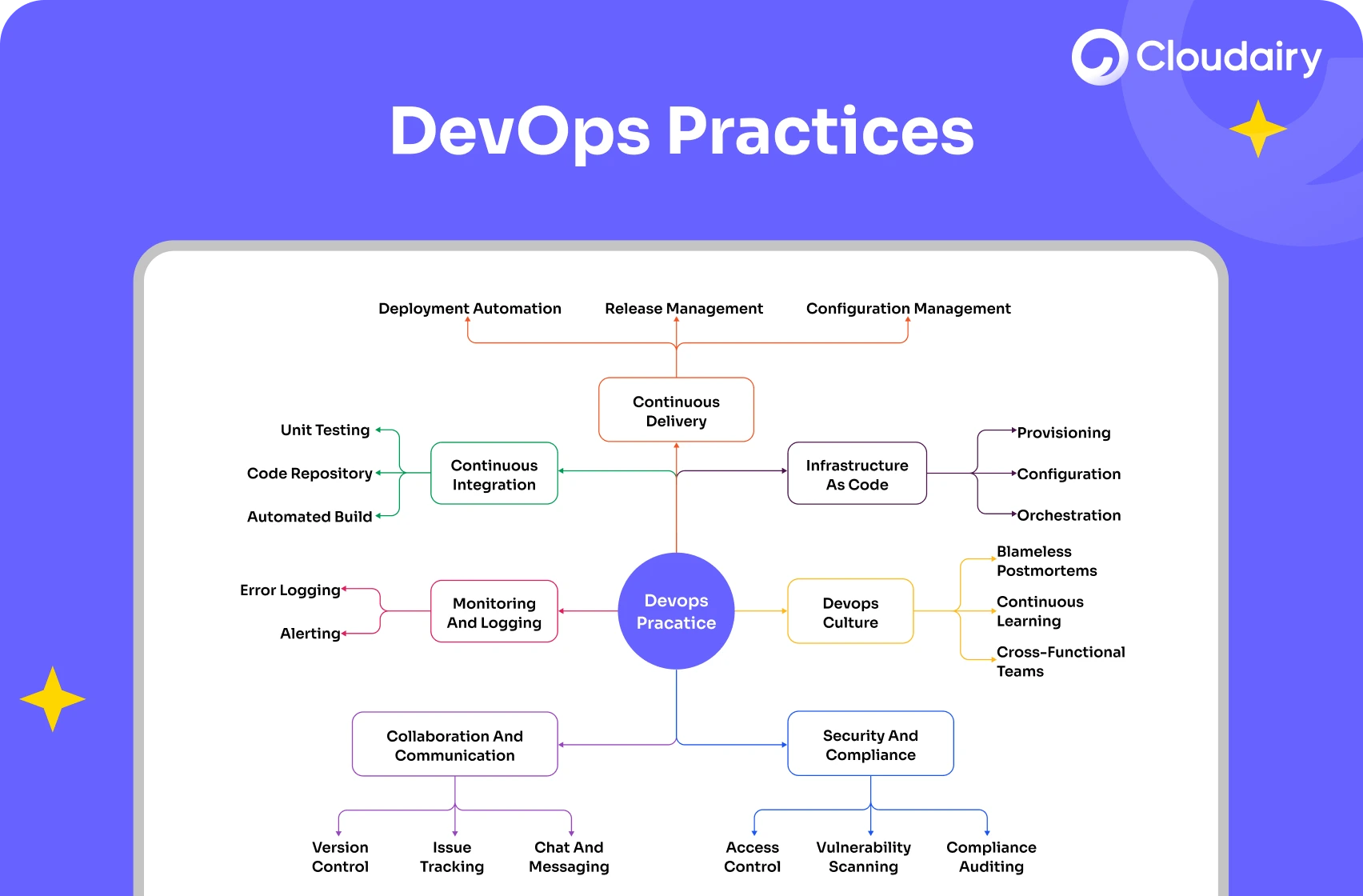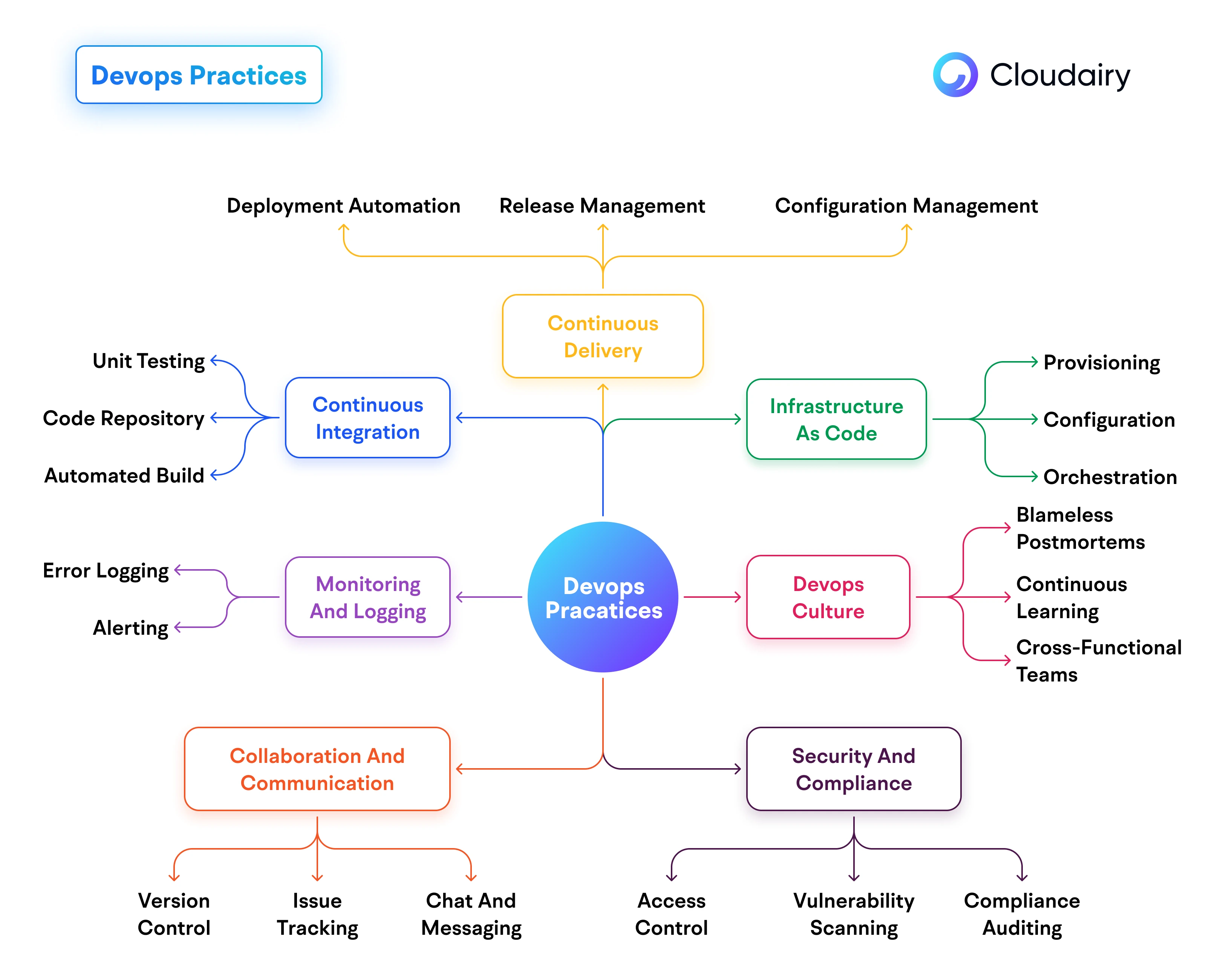



Get your team started in minutes
Sign up with your work email for seamless collaboration.

That well developed DevOps pipeline is a necessity today assemble best practices, tools, and team spirit that makes the processes transparent and efficient. We will look into the most important components that are critical in the DevOps value stream and their optimization for non stop production.
You can also explore our ready to use Template on Cloudairy to create, customize, and visualize your market analysis effortlessly.
The word DevOps is more than just a tool; it's awakening to a new mindset that promotes teamwork, trust, and continuous learning between developers and engineering teams. The key aspects of a DevOps pipeline include:
1. Cultural Shift:
DevOps initiate a cultural shift within organizations, fostering collaboration, trust, and continuous learning between development and operations teams. This shift promotes a shared responsibility for software delivery, breaking down silos, and encouraging a culture of transparency and accountability. By embracing a DevOps culture, teams prioritize communication, feedback, and a collective focus on delivering value to customers.
2. Automation:
Automation is a cornerstone of DevOps, enabling teams to streamline repetitive tasks, reduce manual errors, and accelerate the development cycle. By automating processes such as testing, deployment, and infrastructure provisioning, organizations can achieve greater efficiency, consistency, and reliability in their software delivery. Automation also enhances the speed of delivery, allowing teams to respond quickly to changing requirements and market demands.
3. Continuous Integration (CI):
Continuous Integration is a fundamental practice in DevOps, involving the integration of code changes frequently and automatically running tests to detect issues early in the development process. CI ensures that code changes are validated and integrated into the main codebase regularly, facilitating early bug detection, faster feedback loops, and improved code quality. By embracing CI, teams can identify and address issues promptly, leading to more stable and reliable software releases.
4. Continuous Delivery (CD):
Continuous Delivery complements CI by automating the deployment process after code changes have passed tests. CD enables teams to deploy applications to production environments quickly, reliably, and frequently. By automating the release process, organizations can reduce manual errors, minimize deployment time, and ensure that software updates are delivered to end-users efficiently. CD promotes a consistent and repeatable deployment process, enhancing the overall reliability and quality of software releases.
5. Infrastructure as Code (IaC):
Infrastructure as Code allows organizations to define and manage infrastructure through code, enabling the provisioning and configuration of resources in a repeatable and consistent manner. By treating infrastructure as code, teams can version control their infrastructure, automate provisioning tasks, and ensure that environments are reproducible and scalable. IaC enhances agility, reduces manual configuration errors, and promotes consistency across development, testing, and production environments.
To maximize the benefits of a DevOps pipeline, organizations can implement the following strategies:
In addition to cultural considerations and best practices, the right tools and technologies are crucial in enabling a successful DevOps pipeline. Some popular tools and technologies that organizations can leverage include.

Cloudairy Cloudchart empowers you to design powerful DevOps pipelines. Create detailed flowcharts to illustrate core DevOps practices like CI/CD and automation. Mind maps help organize pipeline elements and dependencies. Cloudairy Cloudchart also allows diagramming pipeline components for a clear understanding of the entire structure. You can check out the template and customize it according to your needs.
Briefly, mastering DevOps methods and techniques becomes a necessity for companies that want to strengthen teamwork, shorten the development cycles and create the most superior software products. Through implementing collaboration, automation, and continuous improvement strategy, organizations will be able to fine-tune their DevOps pipelines to maximize the efficiency, scalability, and flexibility of their operations. The correct implementation of techniques, instruments and a cultural way of thinking could enable organizations to harness DevOps full potential and modern digital environments.
Start using Cloudairy to design diagrams, documents, and workflows instantly. Harness AI to brainstorm, plan, and build—all in one platform.




